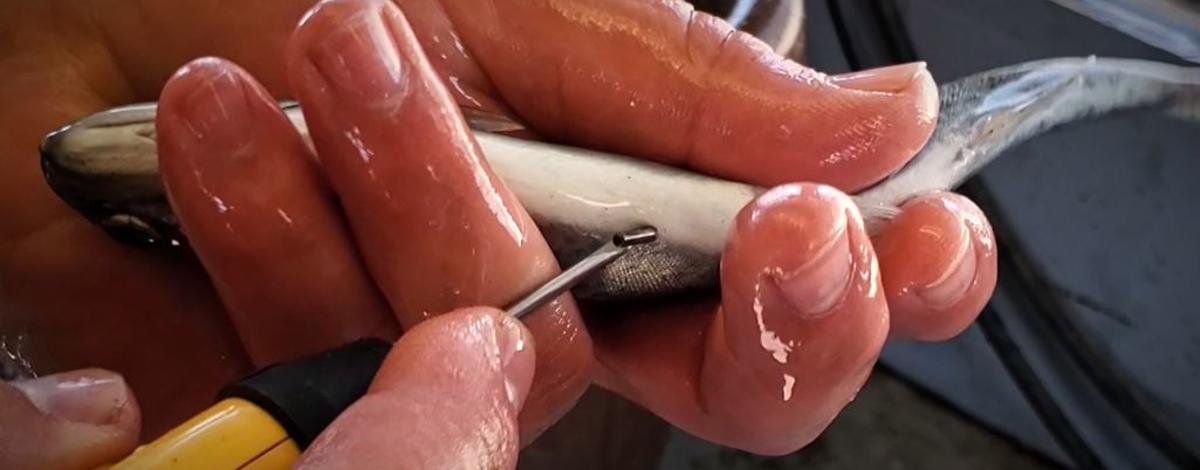A PIT (Passive Integrated Transponder) tag is a glass-encapsulated microchip, the size of a rice grain. The tag includes a unique code that labels each fish individually (like a social security number). This allows fisheries managers and others to monitor juvenile and adult salmonids’ journey through the Columbia Basin corridor. The tags are read when the fish swims past a special reader at places know as interrogation sites (i.e. hydroelectric dams, fish traps, and instream PIT-tag antennas).
Since 1987, more than 50 million fishes have been PIT-tagged in the Columbia Basin. In 2020, more than 1.61 million PIT tags were implanted. The Smolt Monitoring and Comparative Survival Study project out of Lewiston, which this series of blogs has been about, PIT-tagged more than 11,000 wild and hatchery Chinook salmon and steelhead during the three-month trapping period in 2020. The 2021 goal is to PIT- tag 29,650 fish. The number of fishes trapped and subsequently tagged each season varies due to fish numbers, trapping effort, trap efficiency, and river conditions.
PIT-tagging is a highly controlled process to safeguard the health of the fishes. First, the fish is carefully netted and anesthetized to limit movement during the tagging procedure. The fish is then scanned for a pre-existing tag. If none is present, one is inserted just within the body tissue of the abdomen (pictured below). A portion of the daily trap catch is PIT-tagged according to prescribed season tagging goals. During the PIT tag process, data is recorded about each fish. This includes species, rearing (hatchery, wild, or unknown), length, and condition factors such as descaling. This information can be compared to other records of the fish to monitor changes. Ultimately, the PIT tags from these two traps provide valuable timing and survival information through the Columbia Basin migration corridor.
Idaho Department of Fish and Game and the Fish Passage Center cooperatively operate this fish trap as a key component of the Smolt Monitoring Program and the Comparative Survival Study. More information about these important wild salmon and steelhead trout projects is available at https://www.fpc.org/fpc_homepage.php
For more information on Idaho’s wild salmon and steelhead click here.

